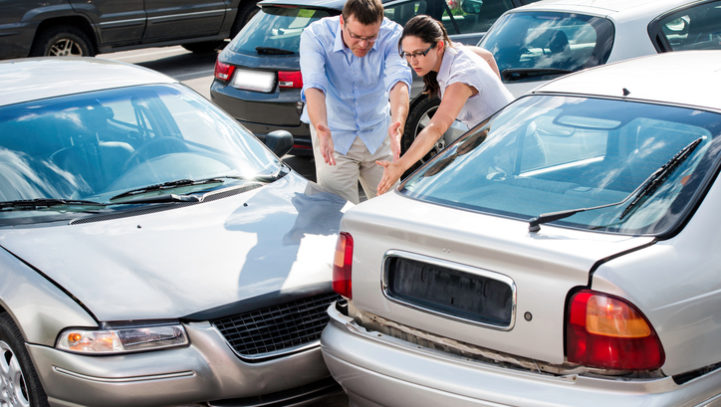WHAT CAN I DO IF THE DRIVER DOESN’T HAVE INSURANCE?
Eventually, two vehicles will collide in a minor or major accident. If you are one of the unfortunate drivers, you may find some comfort in knowing that you have car insurance coverage. This reassures you that if there are injuries or property damage, the insurance will help to pay the expenses.
However, in some cases, the other driver either does not have enough car insurance or none at all. This leaves a gape of uncertainty when that driver was the one who caused the accident and should be held financially responsible.
In no fault states, injuries claims are usually handled by one’s own auto insurance carrier, although some no fault states have a threshold of damages, which if exceeded allows claims against the so-called at-fault driver.
Arizona is a fault based state, which means an accident victim has to prove fault on the person that caused an accident and/or their injuries.
Establishing fault includes several elements
- You must prove the other person owed you a duty of reasonable care (ie: if driving, one has a duty to drive carefully and obey traffic laws)
- Must prove the other person breached that duty (ie: they were negligent by running a stop sign or red light)
- You were injured and incurred damages as a result of their negligence.
Fault can be split among several people or entities, which each defendant liable/responsible only for their degree of fault in causing an accident/one’s injuries
Arizona is also a state of comparative negligence, which means if you act negligently and such actions contribute to your own injuries, your potential recovery will be reduced by the % of fault attributed to you.
If the at-fault driver has no auto insurance, the injured party can make an injury claim against their own auto insurance carrier, providing they purchased UM (uninsured motorist) coverage.
If the at-fault driver’s auto insurance coverage is insufficient to compensate a victim for their injuries/damages, the injured person can make a subsequent claim against their own carrier under their UIM (underinsured motorist) coverage.
Uninsured and Underinsured Motorist Coverage Can Help
Being involved with a driver who does not have car insurance means you will have to use your own insurance company to cover the damages. Uninsured and underinsured motorist insurance is additional coverage that you buy to protect you in this type of situation.
Most insurance companies limit the amount of time that an uninsured and underinsured motorist claim can be filed. For some, the policyholder only has 30 days from the accident date. Therefore, it is in your best interest to begin the process as soon as possible once you find out the other driver is not covered.
Handling an Accident with an Uninsured Driver
The fact that the motorist does not have insurance is the only difference from being in an accident with an insured driver. Consequently, there are precautions and steps that you should take to prepare for an insurance claim.
Call the Police
Calling the police to the scene of the accident is always a good idea. Making sure there is a record of the crash is even more important when the other driver is uninsured. You will need this to have a smooth claims process and make sure your expenses are covered.
In addition, you may want to take pictures of the location where the accident happened, damage to your car, skid marks and any other details at the scene that might be helpful.
Exchange Information with the Other Driver
Make sure you get the other driver’s information. Although the police will get this, you need to know whether the driver has insurance. Be sure to also get contact information for any witnesses.
If you have uninsured motorist protection that covers physical injuries and property damage, your insurance should be able to help. At this point, the company will determine how much damage occurred and your policy’s specific coverage.
Seek Medical Treatment for Your Injuries
Medical expenses are highly likely if you were injured. Typically, the other driver’s insurance would take care of your bills. But in this situation, your health insurance may take care of the expenses.
Still, you may have to cover the deductible out of your own pocket. If you have bodily injury protection with uninsured motorist coverage, your insurer can help with the things that should have been covered by the other driver’s insurance.
Get Your Car Fixed
Your insurer is also the source for information on how you can get your car fixed. With uninsured motorist property protection, repairs will most likely be covered. If not, your standard coverage may not be enough to cover the total cost of repairs. This can lead to seeking compensation through other means.
Recovering Damages by Filing a Lawsuit
When you file a lawsuit after a car accident, there is a strong possibility that you will have a court proceeding. Going to court determines whether the other driver was at fault and how much they should pay. An order or judgment will be issued by the court that instructs the driver what amount must be paid.
Typically, damage awards are regulated by state laws. The Department of Transportation or Department of Motor Vehicles might step in if the other driver does not pay the damages.
Seeking Guidance from a Personal Injury Law Firm
If you have coverage for an uninsured or underinsured motorist, hiring a lawyer might not be your first thought. After all, you have faithfully paid your premiums and believe that your insurance company will be fair, right? The accident was not your fault so there should not be any problems.
Unfortunately, it does not always work out that way. Your insurance company might be reluctant to pay. In this case, an experienced personal injury attorney can represent you and navigate the complicated legal process. Discussing your options can help to ensure you recover what is due.



